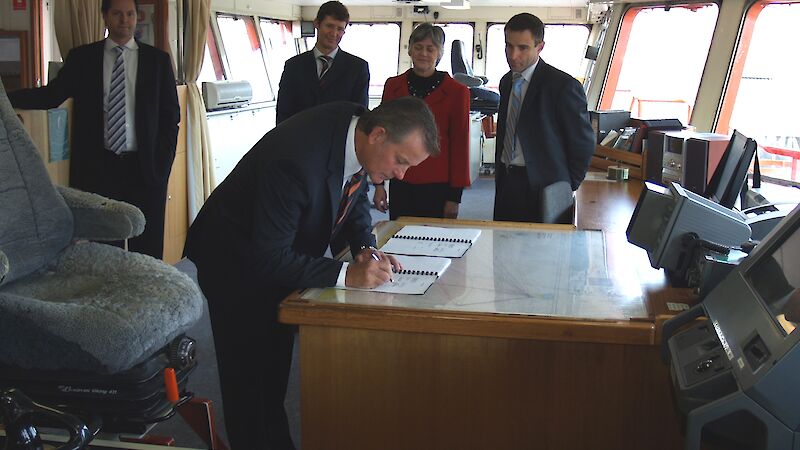Australia’s Antarctic flagship, the bold, orange ice breaker, Aurora Australis, will ply the Southern Ocean between Hobart and Antarctica for another five years, under a new contract between the Australian Antarctic Division and P&O Maritime Services.
Assistant Minister for the Environment and Water Resources, John Cobb, said the contract was renewed after a competitive ‘Request for Proposal’ process, which attracted responses from around the world. It enables the Antarctic Division to use the ship for 180 days per year over the next five years.
“It was a pleasure to sign the contract on behalf of the Commonwealth, and I am looking forward to continuing the long and successful partnership between the Antarctic Division and P&O,” Australian Antarctic Division Deputy Director, Virginia Mudie, said.
Managing Director of P&O Maritime Services, Andrew King, who signed the contract on behalf of the company, said it was an honour to again be selected to provide ship-borne support to the Australian Antarctic programme.
“We have built a great deal of expertise over the past 17 years, and all involved in our Operations office in Hobart and onboard the Aurora Australis are excited about continuing this dedicated service to the Australian Antarctic Division,” Mr King said.
Assistant Minister Cobb said that since 1989 the Aurora Australis has delivered personnel, supplies and equipment to Australia’s Antarctic and sub-Antarctic stations, and carried intrepid marine scientists safely through the Southern Ocean rollercoaster.
“Recent highlights of her service include a survey of over 1 million km² of ocean for krill, and five weeks in the sub-Antarctic for a research programme investigating the impact of climate change on ocean ecosystems,” he said.
“Now docked in Hobart, the ship is undergoing a facelift, with refurbishment of cabins, recreational areas and laboratories, addition of a new marine laboratory on the trawl deck, and repairs to plumbing and telephone systems.
“The ship will flex her new scientific capabilities later this year with two major marine science voyages planned as part of the International Polar Year. The first will harness her icebreaking strength to study the extent and composition of sea ice. The second will involve biodiversity sampling, for the Census of Antarctic Marine Life, and oceanographic experiments.
“The Aurora Australis, and ships like her, will continue to play a vital role in the delivery of personnel, cargo and fuel to Australia’s Antarctic stations.”

